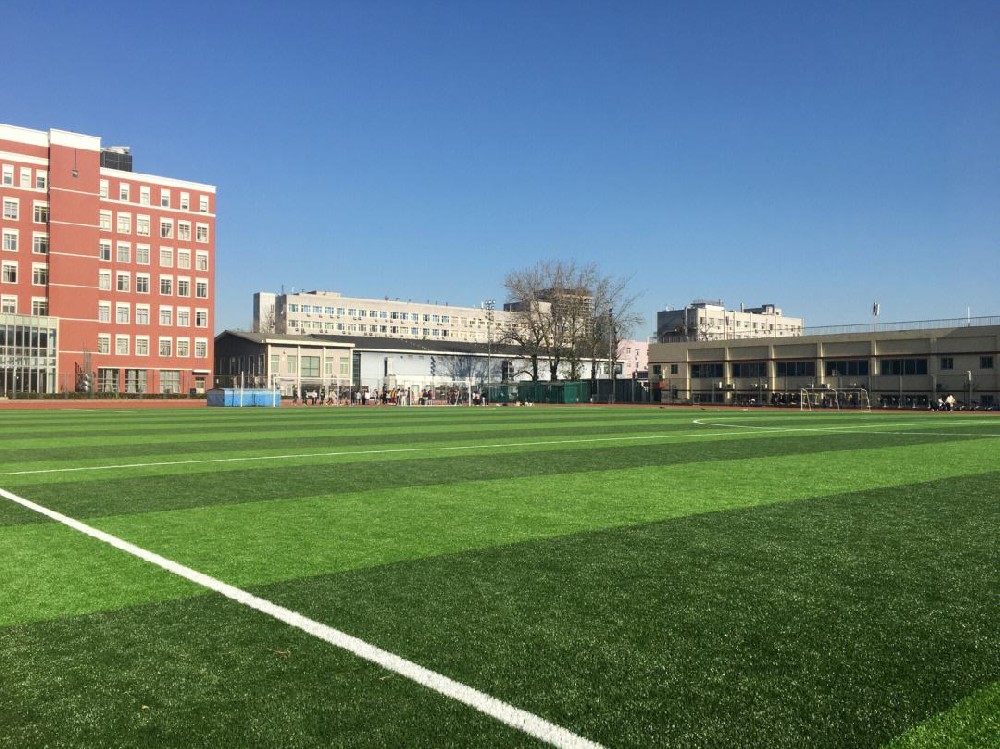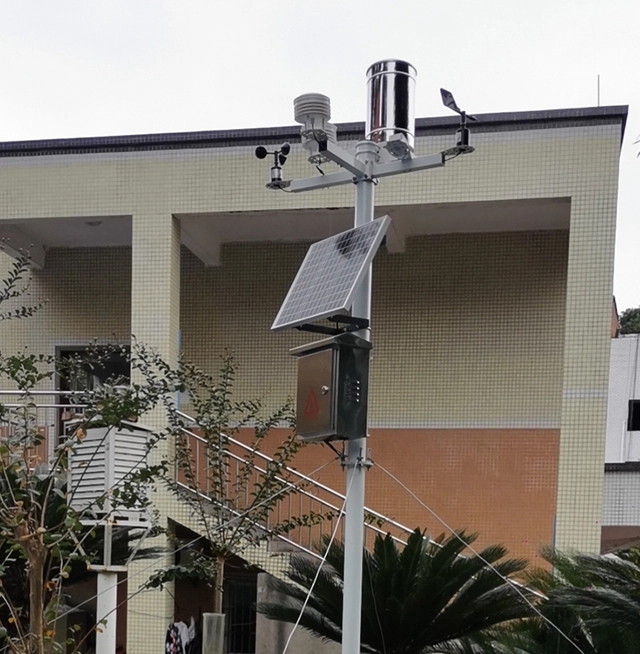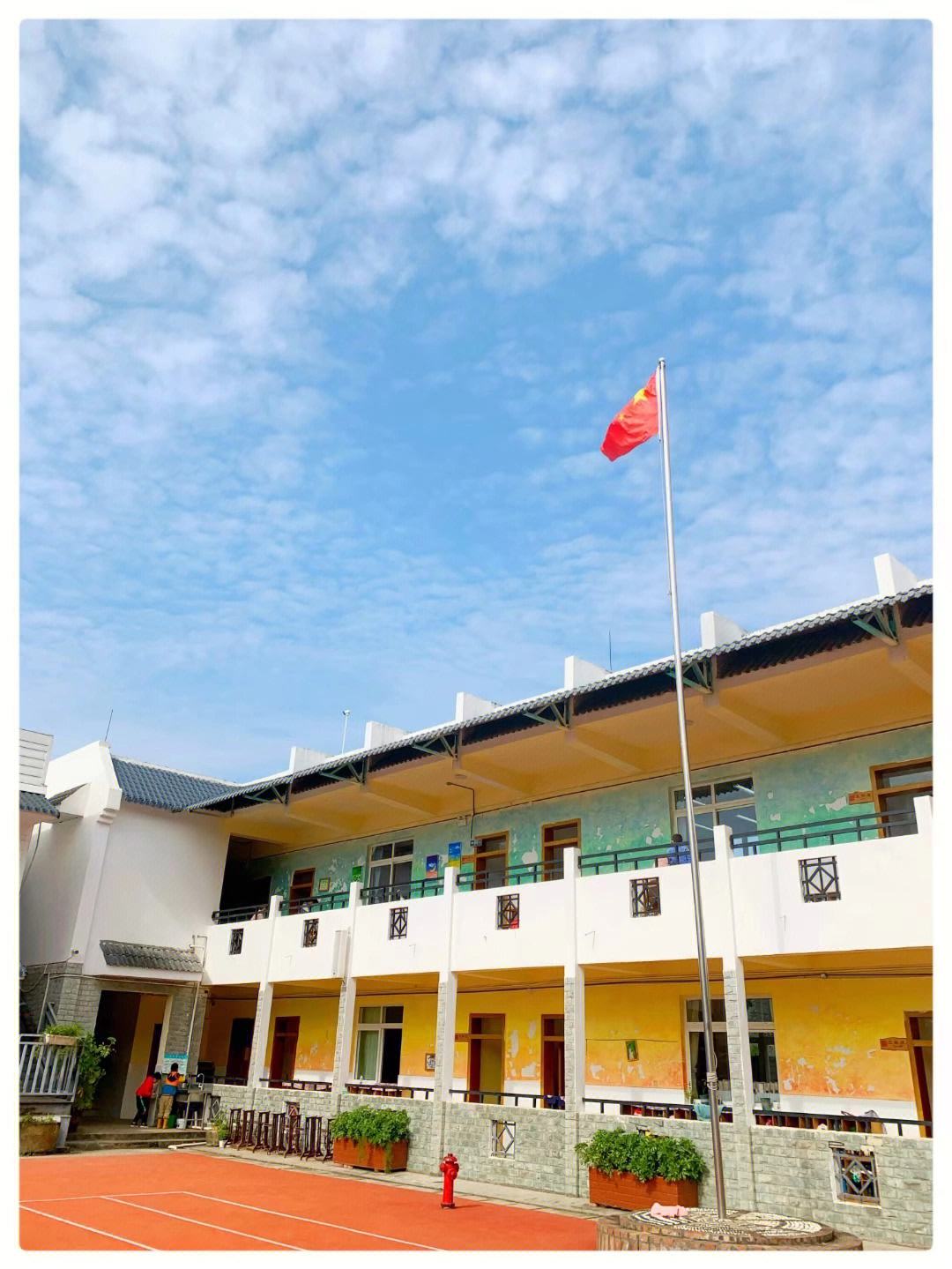

— Solutions —
—Products—
 Consumer hotline +8618073152920
Consumer hotline +8618073152920 WhatsApp:+8615367865107
Address:Room 102, District D, Houhu Industrial Park, Yuelu District, Changsha City, Hunan Province, China
Time:2024-05-12 11:39:08 Popularity:1243
I. Background
With the popularisation of environmental science education and the increasing importance of meteorological knowledge, the construction of a campus automatic weather station has become an important way to enhance students' scientific literacy and practical ability. This programme aims to provide schools with an automatic weather station that integrates data collection, storage, display and educational functions.

II. What is an automatic weather station on campus
Campus Automatic Weather Station is a facility for monitoring the meteorological conditions in the campus, which can monitor the campus meteorological data in real time and transmit the data to the relevant departments in real time through the data processing and transmission equipment, so as to provide powerful support for the management of the campus environment and the arrangement of students' activities.
Objectives
1. realise real-time monitoring and early warning of campus meteorological conditions (e.g. temperature, humidity, air pressure, wind speed, wind direction, precipitation, PM2.5, solar radiation, etc.).
2. Improve the scientific and effective management of campus environment.
3. to provide scientific basis for students' activity arrangement and campus safety.
4. to increase students' knowledge and interest in meteorological science.
5. to build a platform for meteorological science education, carry out meteorological observation practice, meteorological knowledge competition and other activities to improve students' scientific literacy.

Automatic Weather Station on Campus
1. Site selection of meteorological station: select a representative campus area, fully consider factors such as terrain, climate, vegetation, etc., to ensure the accuracy and effectiveness of monitoring data.
-Choose to set up the weather station in the areas of the campus with dense flow of people and frequent activities, such as the playground, the roof of the teaching building, etc. -Consider the geographical location and climate of the campus.
-Consider the geographical location and climatic characteristics of the campus and select representative observation points to ensure the accuracy and reliability of the monitoring data.
-Ensure that the stations are easy to maintain and manage, and provide convenient power supply and communication conditions.
2. Meteorological station construction: including meteorological observation equipment, data transmission equipment and power supply facilities. Among them, the meteorological observation equipment includes sensors for temperature, humidity, wind speed, wind direction, precipitation, PM2.5, solar radiation, etc.; the data transmission equipment adopts wireless transmission to realise real-time transmission of data; the power supply facility adopts a combination of solar energy and storage batteries to ensure the stable operation of the meteorological station.
3. Meteorological data collection and processing: real-time collection of campus meteorological factor data through meteorological observation equipment, and real-time transmission of data to the data processing centre using data transmission equipment. The data processing centre processes, analyses and stores the collected data to provide data support for campus environment management and student activity arrangement.
4. Campus meteorological early warning system: Based on meteorological data and the campus meteorological indicator system, a campus meteorological early warning model is established. When meteorological conditions are monitored to have a greater impact on campus activities, the system automatically sends out warning messages to notify relevant departments and personnel to take corresponding measures.
5. Popularisation of meteorological science and education: The campus weather station is used to carry out popularisation of meteorological science and education activities to increase students' knowledge of and interest in meteorological science.
6. Establishment of a sound emergency plan: according to the meteorological data and campus weather warning, formulate a corresponding emergency plan, clarify the duties and response measures of each department, and improve the ability to cope with severe weather conditions.
IV. Campus Automatic Weather Station System Composition
Meteorological sensors: including temperature sensors, humidity sensors, barometric pressure sensors, wind speed and direction sensors, precipitation sensors, PM2.5 sensors, solar radiation sensors, etc., used for real-time collection of meteorological data.
Collector: responsible for receiving sensor data and converting them into digital signals for storage and transmission.
Data storage and management system: used to store meteorological data and provide data query, statistics and analysis functions.
Data Transmission and Display System: Transmits meteorological data to the server via campus network and displays them via campus website or mobile application.
Meteorological Science Education Platform: Based on automatic weather station data, it carries out meteorological observation practice, meteorological knowledge competition and other activities to improve students' scientific literacy.
V. Expected Effects
1. improve the monitoring capability of campus meteorological conditions and real-time early warning of severe meteorological conditions.
2. enhance the scientific and effective management of the campus environment and improve the quality of the campus environment.
3. build a platform for meteorological science education, enrich the content of school science education, and improve students' scientific literacy and practical ability.
4. to increase students' knowledge of and interest in meteorological science and promote scientific literacy.
5. to improve the accuracy and real-time nature of meteorological monitoring on campus, and to provide teachers and students with convenient meteorological information enquiry services.
6. Promote the popularisation and dissemination of meteorological scientific knowledge on campus, and enhance teachers‘ and students’ awareness of and concern for environmental protection and climate change.
VI. Implementation Guarantee
1. Policy support: actively seek the support of the school leadership, and include the construction of automatic weather station on campus in the development plan of the school.
2. Financial guarantee: raise funds through multiple channels such as school investment and enterprise cooperation to ensure the financial needs for the construction and operation of the weather station.
3. technical support: co-operate with meteorological, educational and scientific research departments to introduce advanced meteorological observation equipments and data processing technologies to improve the construction level of the weather station.
4. Talent training: Strengthen the cultivation of campus meteorological talents and improve the operational quality and professional skills of weather station staff.
5. Publicity and education: Use various publicity channels to increase the publicity of meteorological knowledge and improve students' knowledge and interest in meteorological science.
VII. Post-management and Maintenance of Automatic Weather Station on Campus
1. Regularly maintain and repair the automatic weather station to ensure the normal operation of the equipment and the accuracy of the data.
2. Regularly conduct backup and recovery tests of meteorological data to ensure data security.
3. Continuously optimise and improve the functions and activities of the weather science education platform according to the usage and students' feedback.

This campus automatic weather station solution can be applied to various types of schools, including but not limited to the following:
1. Primary and secondary schools:
For primary and secondary schools, the automatic weather station can be used as a science education platform for students to learn about meteorology through actual observation and data analysis, and to cultivate their interest in science and practical ability. In addition, through the display of meteorological data, students can also understand the impact of climate change on their daily lives and enhance their awareness of environmental protection.
2. Vocational Schools:
For vocational schools specialising in meteorology, environment, agriculture and other related disciplines, the automatic weather station is not only a teaching tool, but also a place for students to carry out practical operations. Students can carry out meteorological observation, data analysis and other practical activities here to improve their professional skills and practical ability.
3. University:
The meteorology, geography, environmental science and other related majors in universities can use the automatic weather station as an experiment and research base. Students can conduct scientific research based on meteorological data, explore the law of climate change and provide scientific basis for environmental protection and sustainable development. At the same time, the automatic weather station can also be used as a practical teaching base for university public courses to improve the scientific literacy of non-specialised students.
4. International Schools:
Students in international schools come from different countries and regions and have wider interests and needs in meteorology and environmental science. The Automatic Weather Station can be used as an internationalised science education platform for students to understand the situation and trend of global climate change by observing and comparing meteorological data from different regions.
5. Special Education Schools:
For students in special education schools, the Automatic Weather Station can be used as a unique teaching resource to help them better understand and master scientific knowledge through intuitive meteorological data display and practical activities. At the same time, it can also promote their cognitive development and social interaction through practical activities such as weather observation and data analysis.
All in all, this campus automatic weather station programme has wide applicability and can be applied to schools of various types and levels, providing a platform for science education and practice for teachers and students.
Related recommendations
Sensors & Weather Stations Catalog
Agriculture Sensors and Weather Stations Catalog-NiuBoL.pdf
Weather Stations Catalog-NiuBoL.pdf
Related products
 Combined air temperature and relative humidity sensor
Combined air temperature and relative humidity sensor Soil Moisture Temperature sensor for irrigation
Soil Moisture Temperature sensor for irrigation Soil pH sensor RS485 soil Testing instrument soil ph meter for agriculture
Soil pH sensor RS485 soil Testing instrument soil ph meter for agriculture Wind Speed sensor Output Modbus/RS485/Analog/0-5V/4-20mA
Wind Speed sensor Output Modbus/RS485/Analog/0-5V/4-20mA Tipping bucket rain gauge for weather monitoring auto rainfall sensor RS485/Outdoor/stainless steel
Tipping bucket rain gauge for weather monitoring auto rainfall sensor RS485/Outdoor/stainless steel Pyranometer Solar Radiation Sensor 4-20mA/RS485
Pyranometer Solar Radiation Sensor 4-20mA/RS485
Screenshot, WhatsApp to identify the QR code
WhatsApp number:+8615367865107
(Click on WhatsApp to copy and add friends)
